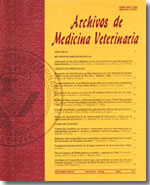Fat mobilisation syndrome in early lactation and its effect on health and performance of dairy cows
Main Article Content
Abstract
Dairy cows, undergoing a period of energy deficit in early lactation mobilise body reserves for milk production. During this period a high proportion of cows develop moderate or severe fatty livers. At the same time, fat is deposited in other tissues. Fatty liver develops when serum NEFA concentrations rise and hepatic uptake of NEFA exceeds the liver’s ability to synthesise and secrete lipoproteins. In most cases, hepatic lipid accumulation appears to begin during prepartum, in association with rising serum NEFA concentrations and declining serum lipoprotein concentrations. Fatty liver when severe, is associated with clinical problems such as infectious and metabolic diseases and reduced breeding efficiency, evidenced by a prolonged time from calving to first estrus and an increased number of services per conception. Liver biopsy appears to be the best way to diagnose a fatty liver in dairy cows but, in order to study the situation in dairy herds it is preferable to analyse information of feed intake in relation to requirements. In addition to this, it is necessary to consider changes in body condition score, to measure milk urea, protein and ßHB concentrations and to study blood composition in a group of dry pregnant cows and in a group of cows in their early lactation period. As prevention, dry cows should be maintained in a moderately fatty condition and fed high quality, palatable feeds in amounts necessary to meet energy requirements.

